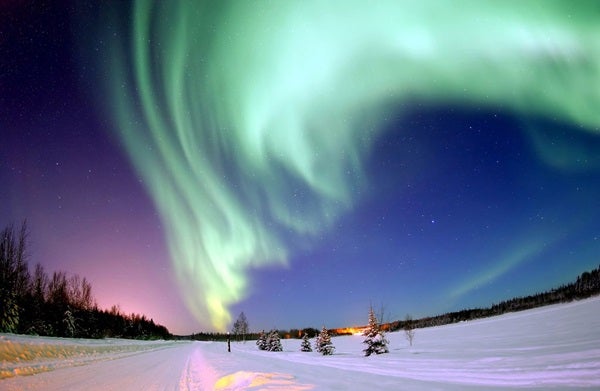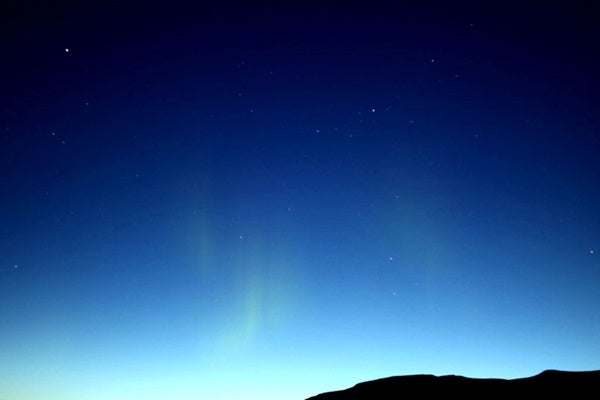On October 25, 1870, observers across the British Isles witnessed a brilliant crimson display, which apparently began at about 5:30 p.m. (some 50 minutes after sunset). A couple of months later, in a letter published in the December 8, 1870, issue of Nature, James Cubitt reported that he first spotted activity from Huntingdonshire at 4:30 p.m. (about 10 minutes before sunset).
Cubitt described the daylight activity as a “remarkable pale luminous appearance” some 25° above the eastern horizon, where he saw “two arcs of faint white lines, one above the other, both radiating outwards with a number of short points.” He added that the sighting interested him because “it seems that the greatest disturbance of the telegraphs happened before the evening display of the aurora.”
The debate continued into the following year with W. G. Thompson recalling, in the March 2, 1871, issue of Nature, a brilliant auroral display in 1870 that, “beyond a doubt,” could be seen in the daylight. “In the autumn of last year,” he wrote, “my eye was attracted by an unusual motion, in what at the first glance appeared to be a light fleecy cloud, but was in reality a broad ribbon of Aurora of a yellowish white colour, which changed its form and position with the peculiar streaming motion of the Aurora, sometimes almost fading entirely and again recovering its comparative distinctness.”
John Jeremiah also disagreed with Burder, and in a May 1871 issue of Nature set out “to prove the fallacy of such reasoning,” by sharing with readers nine historical accounts of daytime aurorae he found dating from a.d. 1122 to 1871.
Several years ago, while conducting unrelated research at the Boston Public Library, I found two additional claims of daylight aurorae sightings. The first dates to 1786 and occurred during a Danish expedition to the Arctic. As Sir John Barrow described in his 1818 work, A Chronological History of Voyages into the Arctic Regions: “A phenomenon was observed during the day-time which [the captains of the two ships involved] concluded to be the aurora borealis.” The activity consisted of “streaks of light columns and luminous points” shooting up from the horizon, “darting and changing their shapes in the same manner as [an aurora].” They saw the same phenomenon the following day, but more faintly. “If it was the aurora borealis,” Barrow wrote, “it is probably the first time it has been observed by daylight, and when the sun was above the horizon.”
The second claim appeared in Sir John Franklin’s 1824 Narrative of a Journey to the Shores of the Polar Sea, in the Years 1819, 20, 21, and 22. In an appendix, he included this extract from Dr. John Richardson’s journal: “March 8, 1821. At 6 p.m, before the daylight was gone, the Aurora appeared … stretching up towards the zenith. At seven, two faint arches crossed the zenith. The Aurora was bright and copious all the evening.”
If you have a daytime aurora experience of your own you’d like to share, please let me know at someara@interpac.net.












